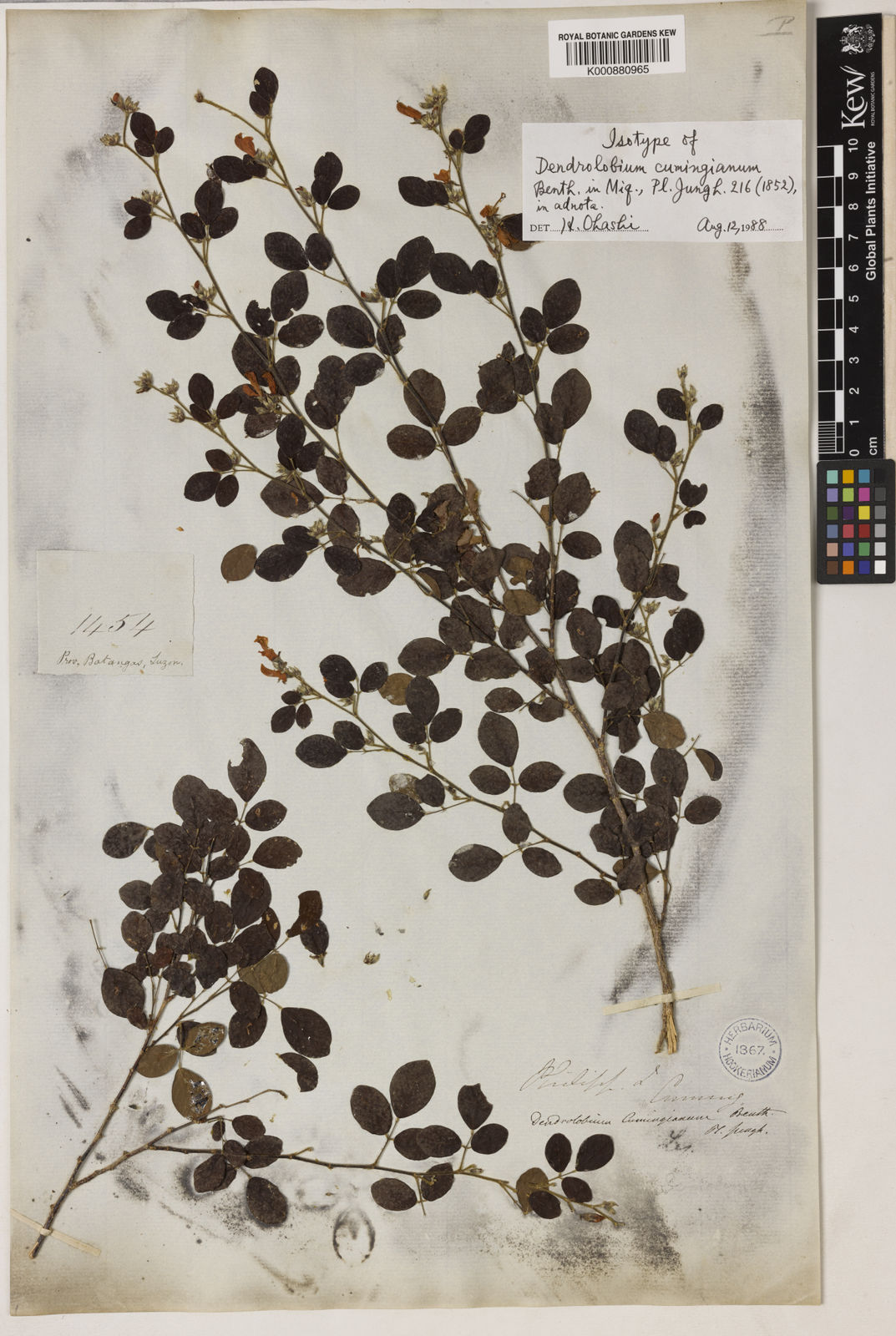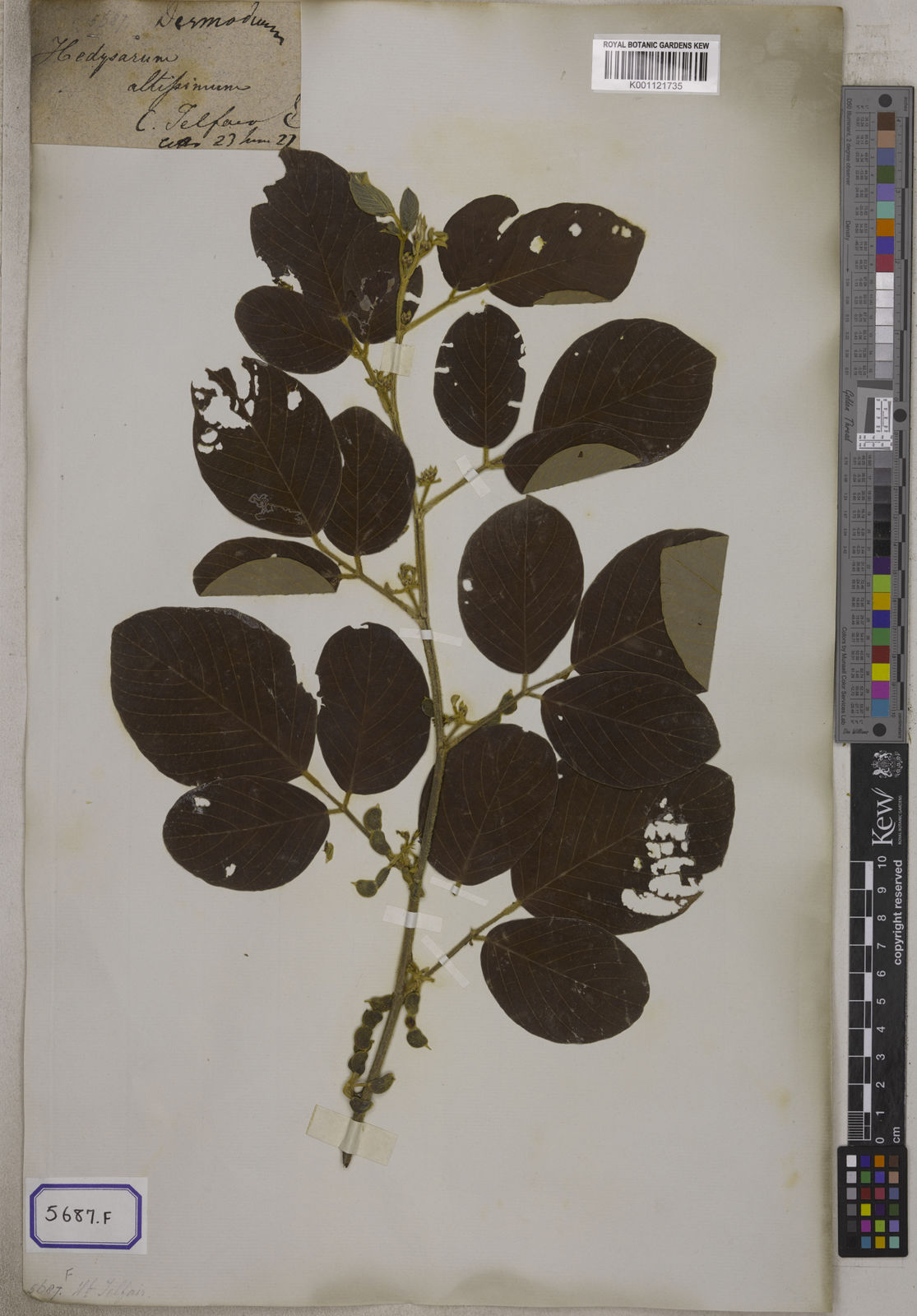Umbrella Dendrolobium
dendrolobium umbellatum
Also known as: ["Umbrella Bush","Umbrella Leaf"]
Overview
A tropical leguminous plant with compound leaves and small, yellowish flowers arranged in umbrella-like clusters.
Benefits & Perks
["wildlife attractant (bees, butterflies, birds)","drought tolerant","shade tolerant"]
Botanical Classification
| Phylum: | Magnoliophyta |
| Class: | Magnoliopsida |
| Order: | Fabales |
| Family: | Fabaceae |
| Genus: | Dendrolobium |
| Botanical Name: | Dendrolobium umbellatum |
Plant Characteristics
Basic Information
- Category: Shrubs
- Suitable Location: outdoor garden in warm climates, or indoor pot with bright, indirect light
- Suitable For:
- Is Weed: No
- Allergenicity: low
Environmental Needs
- Climate: {"temperatureRange":"15–35°C"}
- Hardiness: {"zones":"9–11"}
- Misting: rarely required, only if ambient humidity is very low
- Drainage: Fast-draining to prevent waterlogging.
- Soil Type: Well-draining potting mix with added perlite or sand for aeration.
Maintenance Level
- Maintenance Level: moderate
- Toughness Level: moderate
- Pruning Frequency: As needed, typically every 2–3 months or after flowering.
- Pruning Intensity: Light to moderate, focusing on selective removal rather than heavy cutting.
Care Details
Ideal Sunlight Coverage:
Bright indirect light for 6–8 hours daily; can tolerate some direct morning sun but avoid harsh afternoon sun.
Sunlight Tolerance Tips:
Acclimate gradually to direct light, protect from intense midday sun, adjust placement based on indoor/outdoor conditions.
Care Requirements
Care Difficulty
moderateeasy
Sunlight
full sun to partial shade
Rotate plant weekly for even growth; use sheer curtains to filter strong light; move outdoors in spring/summer for stronger light.
Watering
every 7–10 days during active growth, reduce in winter
Water thoroughly until it drains from the bottom, allow soil to dry between waterings, avoid overwatering.
Soil
well-draining, sandy loam with organic matter
pH: Slightly acidic to neutral (pH 6.0–7.0).
Use pots with drainage holes; avoid compacted soil; refresh soil every 1–2 years.
Temperature
Prefers 65–85°F (18–29°C); tolerates mild fluctuations but avoid prolonged exposure to extreme heat or cold.
Avoid placing near drafty windows; use a thermometer to monitor; adjust care based on seasonal changes.
Fertilizing
every 4–6 weeks during growing season with balanced liquid fertilizer
Flush soil occasionally to prevent salt buildup; apply fertilizer after watering to avoid root burn; stop fertilizing in fall/winter.
Propagation
Methods
Stem cuttings in water or soil.
Step-by-Step Propagation Guide
- Select healthy stem, cut below a node, remove lower leaves, place in medium, maintain moisture, wait for roots.
Best Time: Spring or early summer when the plant is actively growing.
Environment
Warm, humid, and bright indirect light with protection from direct sun.
Medium
Well-draining potting mix or water with occasional changes.
Hormone
Optional but can speed up rooting.
Timeline
Roots typically form in 2–4 weeks; new growth in 6–8 weeks.
Tools Needed
Pruning shears, rooting hormone (optional), small pots, water or soil medium.
Quick Tips
Use healthy, non-flowering stems; keep medium consistently moist; provide bottom heat for faster rooting.
Pruning & Repotting
Pruning Guide
Method
Pinch back tips, trim leggy stems, remove yellow or damaged leaves.
Pruning Plan
Remove dead or leggy growth to encourage bushier, healthier plants; shape as needed.
Tools
Clean pruning shears or scissors, gloves.
Checklist
Sanitize tools, prune during active growth, remove dead/diseased parts, shape evenly.
Repotting Guide
Best Season
Spring, before the main growing season begins.
Pot Size
Choose a pot 1–2 inches larger in diameter than the current one.
Method
Remove plant gently, trim roots if needed, place in new pot with fresh soil, water lightly.
Suggestions
Repot every 2–3 years or when roots fill the pot; beneficial for growth and soil freshness.
Checklist
Check root bound status, prepare new pot with drainage, use fresh soil mix, water after repotting.
Advanced Care Tips
Watering Mastery
Watering Checklist
Check soil moisture, water thoroughly, ensure drainage, adjust for season.
How to Apply Water Properly
Water directly at the root zone, ensure even moisture distribution, allow excess water to drain, water in the morning to reduce evaporation.
Watering Schedule Tips
Water deeply once the top inch of soil feels dry; reduce frequency in winter to prevent root rot.
Soil Improvement
Add perlite or coarse sand for drainage, incorporate organic matter for fertility, ensure proper aeration.
Temperature Stress Management
Signs of Temperature Issues
Wilting, leaf drop, yellowing, or stunted growth.
Cold Stress
Slows growth, may cause leaf discoloration or dieback in prolonged cold.
Solution: Move to a warmer location, insulate pots, avoid cold drafts, protect from frost.
Hot Stress
Leaf scorch, wilting, reduced vigor, or flower drop in excessive heat.
Solution: Provide shade, increase humidity, water more frequently, ensure good air circulation.
Fertilizing Guide
Fertilizing Checklist
Check season, dilute fertilizer, water before feeding, avoid contact with stems/leaves.
Fertilizing Method
Use balanced liquid fertilizer diluted to half strength every 4–6 weeks during growing season (spring/summer); avoid fertilizing in winter.
Common Problems & Solutions
Toxicity Warning
Cats
Slightly ToxicCats may experience mild gastrointestinal upset if they ingest parts of Dendrolobium umbellatum, particularly the seeds and roots. The effects are typically not severe but warrant monitoring.
⚠️ Symptoms:
🌿 Toxic Parts:
⚡ Toxic If:
if eaten
Dogs
Slightly ToxicIn dogs, ingestion of Dendrolobium umbellatum seeds and roots can lead to mild gastrointestinal upset. The toxicity is not life-threatening but may cause discomfort.
⚠️ Symptoms:
🌿 Toxic Parts:
⚡ Toxic If:
if eaten
Humans
Slightly ToxicDendrolobium umbellatum contains compounds that can cause mild gastrointestinal distress when ingested. The toxic effects are generally not severe but can lead to discomfort.
⚠️ Symptoms:
🌿 Toxic Parts:
⚡ Toxic If:
if eaten
Frequently Asked Questions
Q: Is Dendrolobium umbellatum toxic to pets?
A: There is insufficient data on its toxicity to pets.
Q: How often should I water this plant?
A: Water moderately, allowing the soil to dry slightly between waterings.
Q: Does this plant require full sun?
A: It tolerates partial shade but thrives in full sun to partial shade conditions.
Quick Reference
| Family: | Fabaceae |
| Care: | moderate |
| Light: | full sun to partial shade |
| Water: | every 7–10 days during activ |
Get Expert Care Tips
Download the Plantious app for personalized care reminders and plant identification!
Google Play App Store







